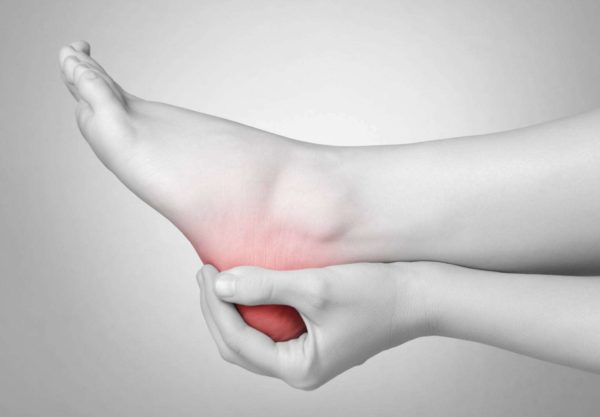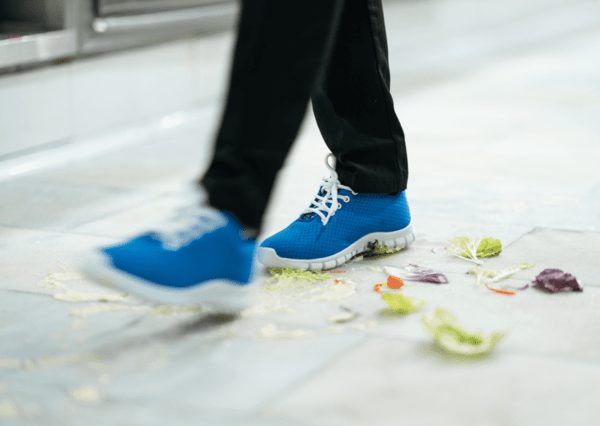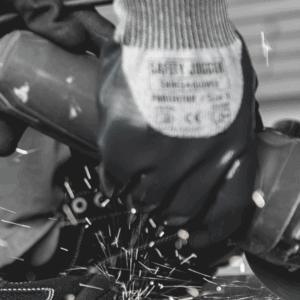What are the Best Shoes for Chefs and Kitchen Workers?
The correct shoes are essential for chefs and kitchen and catering workers. Not just for comfort during long shifts on their feet, but also for practical reasons. Shoes that are designed specifically for professionals are lightweight and include important features such as non-slip soles and anti-static properties. These practical features make them safer on various floor surfaces and conditions.

Unfortunately, many catering professionals suffer from the physical pressure of the job. Choosing the correct professional footwear is key to minimising the risk and alleviating symptoms. This blog should help you to decide which are the best shoes for your needs.
Common Aches and Pains for Chefs and Catering Professionals
With long shifts on your feet all day, it is little wonder that there are a variety of painful conditions that can be common among chefs and catering professionals. For those that stand for long periods at work, there are often painful side effects.
The most common complaints include plantar fasciitis, back and leg pain, heel spurs, swollen feet, numbness and many other aches and pains. This can be due to wearing shoes that are an improper fit, or not fit for purpose, throughout long and demanding shifts on your feet.
The key to minimising these common aches and pains is good shock absorption, first and foremost. With the many hours we spend on our feet and the various surfaces we walk over, the importance should not be overlooked. We need the best shock-absorbing shoes to protect our feet and the rest of the body. All of our footwear styles feature excellent shock absorption in the heel.

The Best Shoes for Chefs and Kitchen Staff with Plantar Fasciitis
Plantar fasciitis, is very common, affecting 1 in 10 people at some point in their lives. It is also more common in women than it is in men. It is caused by an inflammation of the band of tissue (the plantar fascia) that extends from the heel to the toes. The fascia becomes irritated, then inflamed, resulting in heel pain.
There are a variety of treatments available from ice packs and foam rollers to exercises and stretches. However, wearing appropriate footwear can make a significant difference in recovery times and everyday comfort. The key elements here are good shock absorption and postural support. Good shock absorption disperses some of the force of heel striking when walking, and pressure while standing.
A shoe with good postural support, such as the AWP Recovery Shoe helps to hold the foot in the correct position as well as encouraging good posture.
Another common complaint, and often suffered in conjunction with Plantar Fasciitis, is Heel Spurs. Those with heel spurs may choose a slightly raised heel to reduce stress on the heel and increase comfort, such as the Oxypas ‘Move Up’ range. The range includes three styles with a raised heel; ‘Lucia’, ‘Salma’ and ‘Sandy’.
The Best Work Shoes for Sore Feet
Hot and swollen feet may benefit greatly from good ventilation, allowing air to circulate and help cool the feet, reducing swelling and discomfort. You could choose an EVA shoe such as the Oxyva washable shoe, which features air vents along the footbed to allow air circulation around the foot. If you prefer a more traditional style shoe we have many leather styles with cut-out sections for better ventilation. We also have a wide range of comfortable, breathable high tech mesh professional footwear styles, such as the ‘Kassie’ pictured below.
Bunions and corns can be very painful, and footwear can often exacerbate the problem. The most comfortable option to help these common foot issues would be to choose a shoe that is soft and stretchy and causes minimum pressure and friction on the affected area. Both the ‘Anais’ and the ‘Candy’ from Oxypas are made with Lycra for added comfort and can help relieve the discomfort from a variety of common foot issues.
Washable Shoes for Chefs and Kitchen Workers
Often required for professionals working in operating theatres, labs, sterile services, and any cleanroom or sterile environment. Within this category are shoes made of materials that can be washed at different temperatures, as well as a variety of sterilisation techniques.
Read more about our washable shoe options in our blog here.

Rotating Work Shoes for Foot Health
As well as choosing the correct style of shoes for your needs; it is important to look after your foot health. Shoes can become hot and humid, particularly by the end of a long shift. This makes them a breeding ground for bacteria and can cause some particularly unpleasant infections and very painful issues. It is recommended that people should change their shoes at least every two days in order to give their shoes a chance to dry out and breathe. Read our top 5 tips for happy healthy feet here.
Would you like to know about professional footwear more before making a choice? You may find one of the following blog articles useful:
What makes safety & occupational footwear different from regular shoes? Click here to read our ‘Safety & Occupational Footwear Explained’ blog to find out more.
Why is slip resistance important? Click here to read our ‘Slip Resistance Explained’ blog to find out more.
Do you need Anti-static or ESD? Click here to read our ‘Anti-static & ESD Explained’ blog to find out more.
Problems with plantar fasciitis? Click here to read our “The Best Shoes for Plantar Fasciitis” blog to find out more.
What are the best professional shoes for student nurses on placement? Click here to read our ‘Shoes for Student Nurse Placement’ blog to find out more.
What are your options for washable nursing shoes? Click here to read our ‘Washable nursing shoes & clogs’ blog to find out more.










